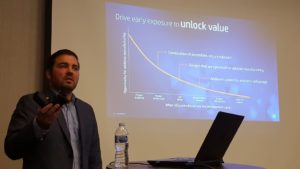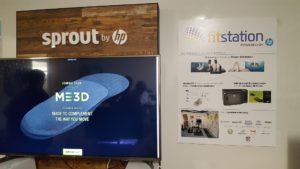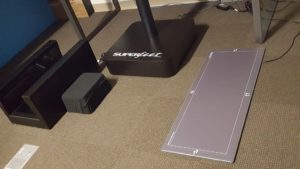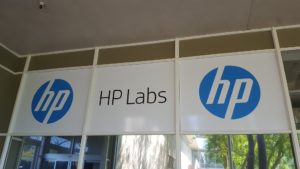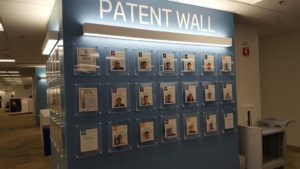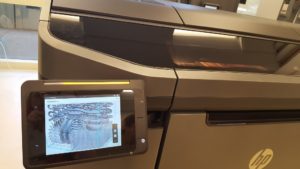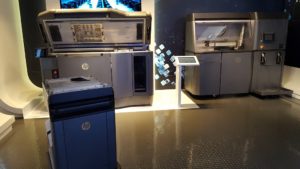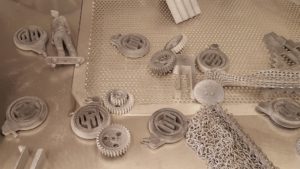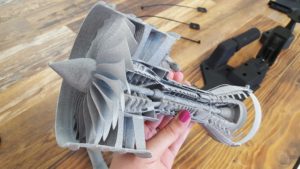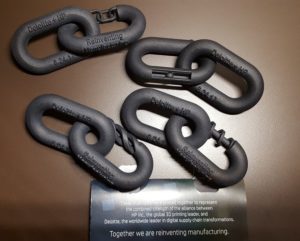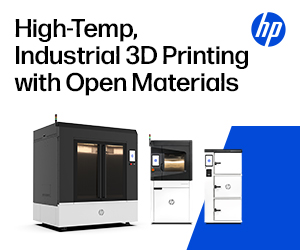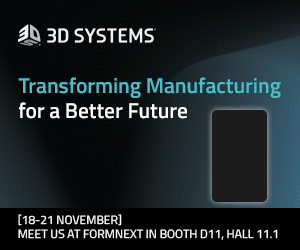 Silicon Valley, home to all things technology, had its beginnings in a humble garage from which arose one of the best-known names in the digitized 21st century. Standing where Bill Hewlett and Dave Packard developed not only technology but a company that would become a giant was something I hadn’t realized was on my geek bucket list until I was already on-site. Several decades after the garage was traded in for formal offices that would form HP — functioning as two separate entities, HP Enterprise and HP Inc., since a big business split in 2015 — I had the opportunity to walk the path of tech history into a quickly-changing future. End-to-end, the visit took me from the garage to the latest big HP Inc. announcement as the company announced a strengthened partnership with Deloitte to springboard additive manufacturing further into today’s $12 trillion global manufacturing industry.
Silicon Valley, home to all things technology, had its beginnings in a humble garage from which arose one of the best-known names in the digitized 21st century. Standing where Bill Hewlett and Dave Packard developed not only technology but a company that would become a giant was something I hadn’t realized was on my geek bucket list until I was already on-site. Several decades after the garage was traded in for formal offices that would form HP — functioning as two separate entities, HP Enterprise and HP Inc., since a big business split in 2015 — I had the opportunity to walk the path of tech history into a quickly-changing future. End-to-end, the visit took me from the garage to the latest big HP Inc. announcement as the company announced a strengthened partnership with Deloitte to springboard additive manufacturing further into today’s $12 trillion global manufacturing industry.
HP hasn’t been quiet about the seriousness with which it is treating additive manufacturing; the company formed its 3D Printing business division ahead of the company split, slimmed down its workforce with more focus toward 3D printing, has been investing in early-stage startups, and has been restructuring its executive leadership to better position itself in the 3D printing industry. While sometimes it seems that the company is everywhere, and I’ve toured their facility in Barcelona to see the launchpad of Multi Jet Fusion 3D printing technology and was one of the first visitors to the recently opened materials development lab in Corvallis, I enjoyed the chance to walk the main Silicon Valley facilities, including HP Labs.
- The HP Garage
- Geek bucket list: here’s this checked off. Thanks to Marney Stapley of Fabbaloo for taking the photo.
- Historically designated as the birthplace of Silicon Valley
In Palo Alto, the HP team shared insights into the history of the company presented alongside looks into its present and future. On-site, I sat in on a presentation on design for additive manufacture (DfAM), a theoretical whiteboard session, the introduction of HP’s entry into personalized footwear, and an executive gathering with the CEOs from HP Inc. and Deloitte to discuss their alliance. These opportunities presented a well-rounded look inside what HP has cooking these days.
DfAM: MJF
“How do we get to tomorrow? When we talk about tomorrow, we’re talking about 3D printing and additive manufacturing applications. We need to talk about design, keeping in mind we’re on this bridge to tomorrow. As a product designer, there’s two things that matter to a process: How does it work? How do you design for that technology? If you don’t know those two things, you’ll never get to adoption,” explained Market Development Manager David Tucker.
Looking to HP’s foray into 3D printing, Tucker noted that thanks to extensive experience with inkjet the company has “30 years of innovation in this scaled technology” to base their current design work on. Working with additive manufacturing does require a different way of thinking than that used for designing in traditional injection molding-based manufacturing. A key to getting the most out of additive technologies, Tucker said, is driving early exposure: “The further back you employ additive manufacturing, the more value you obtain from that process.”
 Designing specifically for 3D printing negates problems that might arise, eliminating failure before any parts are physically created. It’s not enough, of course, simply to design with 3D printing in mind; the specific technology to be used must be accounted for, and MJF has its own unique sets of requirements for what will make the best build. Considerations include printed layer and packing density optimization, and a Japanese-originated methodology of inventory control taking wider grip in AM today: the Kanban method. With the Kanban method, engineers can design for manufacturing optimization, increasing build density, improving capability, optimizing capital resources, and taking advantage of build area by nesting parts within one another.
Designing specifically for 3D printing negates problems that might arise, eliminating failure before any parts are physically created. It’s not enough, of course, simply to design with 3D printing in mind; the specific technology to be used must be accounted for, and MJF has its own unique sets of requirements for what will make the best build. Considerations include printed layer and packing density optimization, and a Japanese-originated methodology of inventory control taking wider grip in AM today: the Kanban method. With the Kanban method, engineers can design for manufacturing optimization, increasing build density, improving capability, optimizing capital resources, and taking advantage of build area by nesting parts within one another.
For MJF, Tucker noted three major recommendations HP offers to design engineers:
- Identify the build direction
- Accuracy is better in XY than Z
- Curved surfaces facing down
- Avoid sudden changes in printed surface area
- Decrease thermal buildup
- Draft into the build direction to split up surfaces
- Think about packing density
- More parts = less cost
- Part diversity matters
Communication is also key to optimal design, and for HP that often means relying on its extensive network of high-profile partners. Among these are the SAP Collaboration Room, Siemens Auto-Packing Software, and Deloitte to integrate optimization into DfAM.
“Most companies make things or design things; not a lot of companies design and make things anymore. The goal is to optimize for manufacturing. Collaboration Room – living log to track design optimizations,” Tucker noted. Of Deloitte, he said, “They introduce new ways to think, employ the digital thread so we understand before we print something that it’s going to work, before wasting the resources in printing something that isn’t going to work.”
Among these new ways to think, Tucker noted as crucial:
- Redefine the design process
- Building the digital thread
- Adopting new design principles
- Understanding the full economics
- Managing open and iterative development
- Controlling for quality
He explained that HP uses third-party software, integrating their own processes into existing software; partners obviously play an important role in HP’s positioning in the 3D printing industry, and software is key to that. There are, Tucker said, so many challenges that “I don’t think there’s one company that can control all of that,” making software an area of focus for partnering. Since my visit, HP has expanded its work with Siemens with the announcement of a new HP-certified Additive Manufacturing software module from Siemens
Whiteboard Session
 HP Chief Engineer and Senior Fellow Chandrakant Patel presented a unique thought session outdoors at HP, where the small group of us gathered had the pleasure of listening to his take on going “from art to part.” Drawing on a whiteboard to illustrate his points, Patel walked us through a few ages of technological history:
HP Chief Engineer and Senior Fellow Chandrakant Patel presented a unique thought session outdoors at HP, where the small group of us gathered had the pleasure of listening to his take on going “from art to part.” Drawing on a whiteboard to illustrate his points, Patel walked us through a few ages of technological history:
- 19th C – Physical (Machine) Age
- 20th C – Cyber (Information) Age
- 21st C – Cyber Physical Age
As we have proceeded through each age and its accompanying Industrial Revolution, we have seen the world turn from manufacturing to information to a balance of the two defining Patel’s outlined ages. The whiteboard session felt like the best of lectures from my college days, as the small group format in the sunshine allowed for an intimate exchange of big information. The big ideas Patel touched on whittled down to the need for actionable knowledge, and he touched of course on HP’s role in this.
“In Cyber Physical Age, we need a multidisciplinary cadre of people,” Patel said. “Why so bullish on HP? I feel the process by which we look at the course ahead is what excites me.”
His enthusiasm carried across overarching looks at several megatrends and what he described as the impact of those on the supply/demand management of resources.
enjoyed preaenting in extemporaneous chalk talk format @HP_Newsroom @hplabs @HP 3d MJF pic.twitter.com/LGVP6FNupV
— Chandrakant D. Patel (@joulespatel) August 25, 2017
HP Enters the Footwear Arena
Through more partnerships, HP has stepped into footwear. Bringing its 3D scanning and 3D printing technologies into play, along with the HP Sprout system, the company is powering FitStation. The new platform measures not only the exact dimensions of each foot, but analyzes the specific gait of each individual through a mat connected to the system. Through the platform, users can receive recommendations of off-the-shelf insoles and shoes that will work best for them, or they can opt to have their own custom footwear created.
The early look at FitStation at HP Labs showed me the latest player in the 3D printed footwear game, as HP works with partners including including RSscan (Belgium), Superfeet (insoles, US distributor for FitStation), and DESMA. FitStation is currently running pilot programs in 11 retail stores as the platform works to streamline operations and, hopefully, cut costs ahead of a full launch.
CEOs of HP Inc. and Deloitte Discuss Alliance
HP and Deloitte are very serious about their intention to “reinvent manufacturing” as they work together as allies in an integrated business relationship to take on the overall $12 trillion global manufacturing industry. The CEOs of each company were on hand, along with a series of senior company executives and representatives from other partner companies, to discuss the alliance.
Dion Weisler, President and CEO, HP Inc., and Punit Renjen, Global CEO, Deloitte, noted that they were ready to take their companies’ existing relationship to the next level.
“What we’re doing is giving those tools back to the blacksmith. Manufacturing can happen anywhere in the world, much closer; parts transfer digitally, over airwaves, can be printed anywhere in the world. What we realized at the start was it would be difficult for any one company to do this,” Weisler began, touching on the importance of partnerships.
HP and Deloitte have been working together for quite some time, Weisler noted, continuing on that, “It is wonderful for us today to sit together announcing this alliance today, the first of its type. I’m thrilled to announce our partnership today, I think it will propel and accelerate this industry forward.”
“We’re truly here to change the world. From my perspective, this change is in three dimensions,” said Renjen.
Why are they partnering now? The technology has matured, Renjen noted, and digitization is “a natural disruptor as well as a great opportunity.” That opportunity expands beyond 3D printing into such advanced fields as robotics and artificial intelligence, and it is “the confluence of all of this that makes this such a great time” to establish a deeper alliance.
“HP is the world leader in technology. We could have partnered with anybody, we picked HP because we believe they are the world leader in tech,” said Renjen. “If you allow me to toot my own horn, we are the leaders in transformation.”
 A panel of representative partner companies continued the discussion, led by HP’s Michelle Bockman, Global Head of 3D Printing Commercial Expansion and Development, to broaden the conversation and provide additional perspective. Senior executives present included Johnson & Johnson‘s Joe Sendra, Worldwide VP of Manufacturing, Engineering, and Technology; Siemens‘ Bob Jones, EVP of Global Sales, Marketing and Services; SAP‘s Gil Perez, SVP of IoT and Digital Supply Chain; and Deloitte’s Doug Gish, Principal, Supply Chain and Manufacturing Operations. The panel, whose discussion we will examine more in a future article, noted an overall bullish perspective on the place of 3D printing and overall digitization in the growth of the global economy.
A panel of representative partner companies continued the discussion, led by HP’s Michelle Bockman, Global Head of 3D Printing Commercial Expansion and Development, to broaden the conversation and provide additional perspective. Senior executives present included Johnson & Johnson‘s Joe Sendra, Worldwide VP of Manufacturing, Engineering, and Technology; Siemens‘ Bob Jones, EVP of Global Sales, Marketing and Services; SAP‘s Gil Perez, SVP of IoT and Digital Supply Chain; and Deloitte’s Doug Gish, Principal, Supply Chain and Manufacturing Operations. The panel, whose discussion we will examine more in a future article, noted an overall bullish perspective on the place of 3D printing and overall digitization in the growth of the global economy.
“As companies reimagine themselves, we’ll all be surprised by the new business models that will be created, that don’t exist today and will be commonplace. We’ll be surprised by how commonplace 3D printing and digital will be; we won’t have to have special events about it, it will be so ubiquitous,” Gish summed up of the future outlook.
To round out the event, Weisler and Renjen returned to respond to questions from the gathered media and analysts to expand further on their thoughts on the alliance and the growth of 3D printing.
“We have to start with the customer, and be sure that it improves their lives,” Renjen noted of the growth of digital technologies. “We look to see as to how to change their supply chain and fundamentally rethink their manufacturing processes.”
The intent overall is, both CEOs underscored, to democratize manufacturing through making their technologies and market understanding more widely available. Taking business from analog to digital, Weisler noted, requires a very compelling use case to encourage customers to leverage new technologies and processes. Economics have to make sense, processes have to be provable, and technologies have to be appropriate for a variety of verticals; these are the areas where the companies are focusing efforts.
HP Inc.
On-site at HP, technology, history, and innovation are on display. While I was present for a high-profile announcement, the opportunity to walk the halls of HP Labs and meet with executives from the company, as well as several partners, provided an unparalleled glimpse into the operations of one of the disruptive forces in today’s 3D printing industry. The inside look has offered not only a unique perspective into their operations and straightforward information exchange, but quite a lot to continue to think on as MJF continues to make its way deeper into 3D printing and as we continue to explore the intricacies of the industry environment with close contact to the sources.
Below are additional photos from inside HP.
- The views aren’t half-bad, either
- HP and Deloitte are linked in their efforts. Get it?
Discuss this story and other 3D printing topics at 3DPrintBoard.com, or share your thoughts in the Facebook comments below.
[All photos: Sarah Goehrke]
Subscribe to Our Email Newsletter
Stay up-to-date on all the latest news from the 3D printing industry and receive information and offers from third party vendors.
Print Services
Upload your 3D Models and get them printed quickly and efficiently.
You May Also Like
Axtra3D Brings Full “Axtra Workflow” and New Materials to Formnext 2025
Axtra3D hits Formnext 2025 with a big shift in strategy. The company isn’t just selling printers anymore; it’s selling a complete workflow. At the show, Axtra3D unveiled its new Axtra...
From Hobby to Hustle: How the Prosumer 3D Printing Market Is Rewriting the Industry
When many hear 3D printing, they still think of hobbyists tinkering in garages, making figurines, models, or toys. But that image has changed. A new wave of users exists between...
Bambu Lab Launches P2S: Expanding the P1 Legacy with Smarter, Faster Printing
See the addendum to this article for an update from 11/25/2025. Just two years after shaking up desktop 3D printing with the P1 Series, Bambu Lab is back with the...
Trust Bambu
Bambu Lab‘s relentless rise has galvanized the industry into a furious response, making desktop 3D printers much faster and more reliable. Other competitors are in denial and, like deer in...






